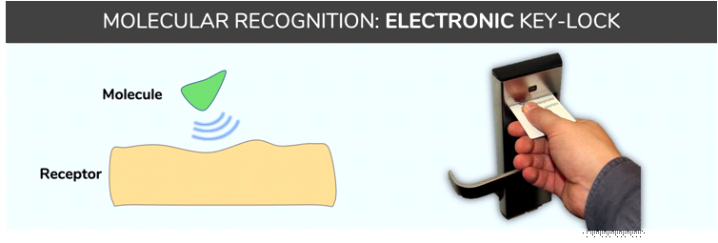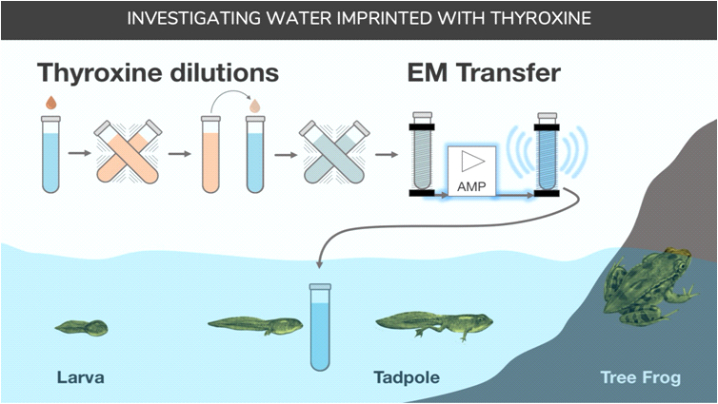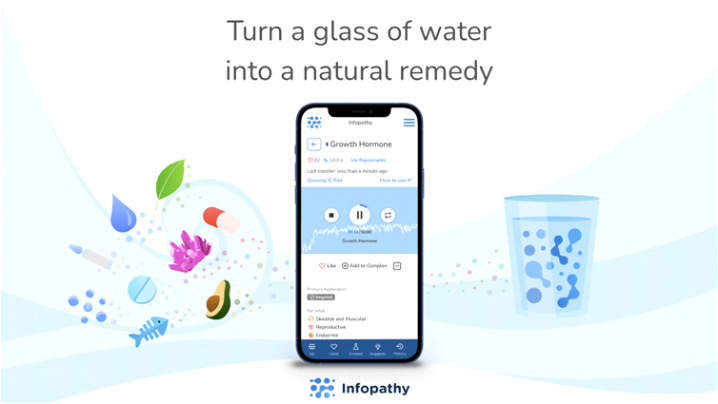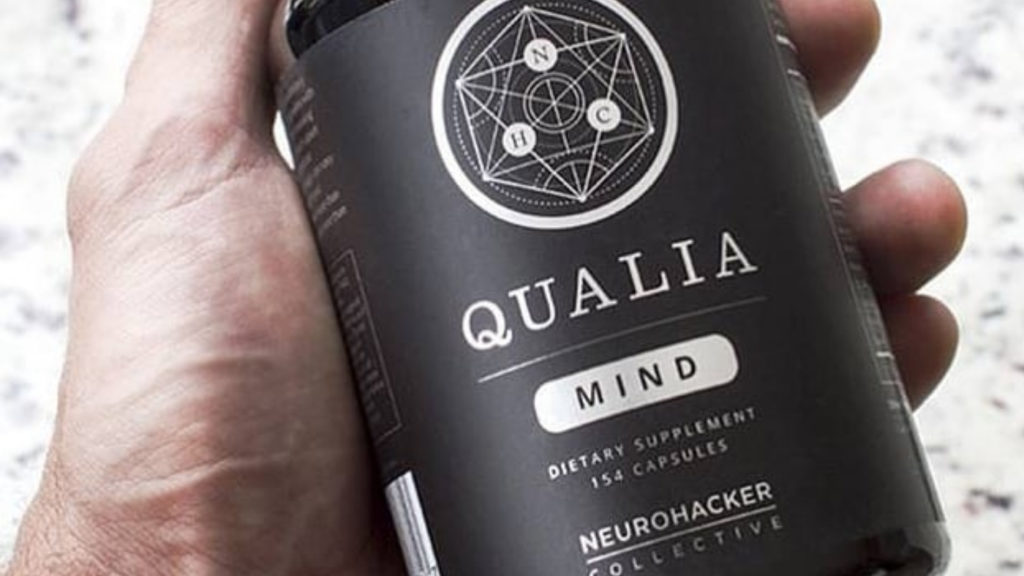March 2, 2021
I've talked in the past before about the use of inaudible sound waves to elicit specific brain wave and neurotransmitter responses, specifically with a device called the “Apollo,” which I discuss in the podcast.
I've also been exploring the use of magnetic waves to elicit certain neurotransmitter responses, via a device called a “Hapbee,” which can simulate chemicals such as caffeine, melatonin, etc. to elicit a physiological response without the actual intake of supplements, pharmaceuticals or any other compounds or medicines. I'll be doing a podcast on this device soon.
And finally, I've now been experimenting with a so-called “Infopathy” device (use code BENG10 for 10% off), which “imprints” water, or your body, with frequencies of everything from St. John's wort to coffee to Viagra to anything else you want from their literal hundreds of “infoceutical” options. It's so fascinating that I just had to get the inventor on the show!
These are all examples of the application of something called “infoceuticals.”
Info-what?
I'm serious. And I'll explain. But first, if I told you that one day scientists would discover a way for you to download—much like an email or a file attachment—electronic pharmaceuticals or supplements from the internet, would you take these so-called “digital drugs?”
Don't laugh. It's already part of our world. As you've probably noticed, more and more physical items are being offered in an electronic format these days (e-books, e-money AKA crypto, e-keys/locks, etc.) to make your life more convenient.
I know this scenario may seem a little far-fetched, but if you remember, prior to the invention of email (you do remember that? gee, you old fuddie-duddie), your only option for sending a message to someone was via good ole' fashioned “snail mail,” which would take a few days—or even months depending on the distance—to be received. Back in those days, the thought of expediting this process to mere seconds seemed unfathomable. Now, look at how far we've come: Not only can messages be sent electronically within seconds, but so can entire movies, a lifetime of family photos, books, musical albums, and pretty much any other form of media you could imagine.

So, in a world where gradually everything is becoming digitized, one cannot help but wonder: is it possible to create digital drugs or supplements that could replace or partially replace or at least give some of the effects of physical drugs and supplements, without you actually having to take something orally or apply something transdermally, or get a shot in your arm or shove something up your butt? Is there a way to design one of these so-called digital drugs that would carry information to your body and, in return, have effects similar to the physical substance itself? This is a question I explored on the recent podcast “How To Turn A Glass Of Water Into A Pharmaceutical, Supplement, Remedy & “Information Carrier” Using The Science Of Infopathy.” with my guest Anton Fedorenko.
The simple answer is… Yes, such a technology is possible, and in today's article, a guest post by Anton himself, you'll discover the science behind how digital drugs are a reality today (and not just some science fiction fantasy) as well as how you can download these digital drugs yourself in the comfort of your own home.
How Your Body Recognizes and Uses Electronic Information
Generally, when a drug interacts with its target receptor in the body, it either blocks or stimulates certain biochemical reactions. This specific interaction can be explained using the “key-lock” model, a mechanism proposed by chemist Emil Fischer in 1894.
According to this model, a molecule, such as a drug in this case, and its target receptor should have specific complementary geometric shapes that fit exactly into one another to activate/block a reaction–comparable to how a key perfectly fits a lock to open/close it, as is illustrated below.

Now, think about this concept from a digital viewpoint. You probably use various electronic key-lock interactions in your daily life—from opening your car door to paying for groceries. In this case, it does not matter what the shape of the key is, but more importantly, what electromagnetic signal is emitted and whether it is received, recognized, and accepted by the lock.

Similarly, it has been shown that molecules may also interact with cell receptors in your body according to the same electronic key-lock principle. Biophysicist Luca Turin, known for the vibrational theory of olfaction convincingly demonstrated that humans “smell vibrations.” In one of his experiments, he looked at two different molecules that were very similar in shape, but had different electromagnetic spectra and observed that these molecules had two different scents: One substance smelled like fresh-cut grass, while the other smelled like rotten eggs.

In his second experiment, Turin looked at two different molecules with different shapes, but similar electromagnetic spectra, and found that the two substances had similar scents. These results illustrated that receptors found in the nose (i.e., olfactory receptors) are like tiny spectrometers; they are able to probe the vibrational spectrum of molecules and then send corresponding signals to the brain. For more on this experiment, watch Turin's TED Talk below.
Essentially, what Turin showed was that there is a mechanism for your body to recognize and use electronic information. According to the electronic key-lock model, if a receptor comes into contact with electronic information recorded from a drug, then the effect on the receptor would be similar to the effect from the drug itself.
How Are Digital Drugs Created?
Every substance has a unique electromagnetic spectrum that can be captured and recorded. In essence, a substance is placed in an electromagnetic coil that works as an antenna, and the signal coming from the substance will be amplified and recorded.
These recorded signals, or digital drugs, can then be directly applied to the body, or the signal can be imprinted to water (as is usually the case in the practice of Energy and Informational Medicine) to cause a therapeutic effect. (Below is a schematic representation showing how digital drugs are created.)

So, how can water be imprinted with digital drugs?
To understand this, you first need to understand the quantum electrodynamics (QED) theory of coherent domains in water, which was first proposed by Italian theoretical physicists Giuliano Preparata, Emilio Del Giudice, and Giuseppe Vitiello in 1988. This theory basically states that if there are two water molecules that oscillate at about the same frequency and are surrounded by an electromagnetic field with a similar frequency, then there will be an attractive force between the two water molecules.

In this way, water molecules can form coherent domains under the influence of an electromagnetic field and all the molecules in the same coherent domain oscillate at the same frequency. Interesting fact: Coherent domains can consist of several million water molecules, and under certain conditions, this new state may be maintained for hours, weeks, or even years.
Accordingly, when water is exposed to the electromagnetic signal of a substance or drug (i.e., a digital drug), water is organized into coherent domains that mimic the electromagnetic spectrum of the substance (see below).
 When a person drinks this imprinted water, the water delivers the information to the cell causing similar effects on the cell receptors as the substance itself, because, as described above, the receptor's reaction depends on the spectrum of the substance and not its shape.
When a person drinks this imprinted water, the water delivers the information to the cell causing similar effects on the cell receptors as the substance itself, because, as described above, the receptor's reaction depends on the spectrum of the substance and not its shape.
Studies Exploring Water Imprinted With Electromagnetic Signals
Scientists from around the world, including French virologist and Nobel Laureate Dr. Luc Montagnier, have investigated electromagnetic imprinted solutions.
With respect to Dr. Luc Montagnier, he and his research team studied electromagnetic signals from serially diluted DNA solutions.
For this study, the DNA of pathogenic bacteria was diluted in water and then the electromagnetic signal was recorded. Next, the signal was imprinted to a tube of pure water, all the components necessary for DNA synthesis (e.g., nucleotides, primers, DNA-polymerase, buffer) were added, and polymerase chain reaction (PCR) was performed.
Following PCR, it was observed that 98-100% of the DNA fragments were identical to those which were used as the source of the signal. These findings indicated that the imprinted water provided the DNA template needed to replicate the original DNA molecule.
There is a great documentary—which you can watch below, called “Water Memory”. It has over one million views and looks at the works of Dr. Luc Montagnier, as well as another French scientist, Dr. Jacques Benveniste, who is known for digitizing electromagnetic signals from medicines.
Another researcher, Dr. Peter Endler, was also interested in the ability of water to store and transfer information. He and his team compared the effects of thyroxine, the main hormone produced by the thyroid gland, to digital thyroxine on tadpoles. The studies illustrated that both the thyroxine itself and the electromagnetic signal recorded from thyroxine had similar effects on tadpoles.

Thyroxine in concentrations above 10-8 parts by weight stimulated and accelerated larvae to tadpole metamorphosis, while dilutions in the range of 10-11 to 10-30 parts by weight, inhibited morphogenesis. Likewise, for digital thyroxine, results indicated that when a 10-8 parts by weight thyroxine solution signal was imprinted to water, such water accelerated metamorphosis, while water imprinted with a signal from thyroxine solution in the concentration of 10-11 to 10-30 parts by weight prevented morphogenesis. If you are interested in learning more, additional studies can be found here.
The Current Status of Digital Drugs
For many years, energy, bioresonance, naturopathic, and other practitioners have been using devices that store thousands of signals recorded from different therapeutic substances.
Traditionally, practitioners imprint the signals to tinctures containing water and give them to their patients. You can get an idea of what this looks like in the photo below.

With the advancement of internet technologies, these signals are now available anytime on websites such as Infopathy, an online platform of literally thousands of signals generated using algorithms or recorded from substances that have healing, therapeutic, or other biological effects. These signals, which can be considered digital drugs, are called Infoceuticals (ICs).
There are three different types of ICs found on the Infopathy website, many of which were discussed in this recent podcast episode with Ben: Imprint, Pulsed Electromagnetic Field (PEMF), and Audible, and they all have different application methods. You can learn more about the different types of ICs and application methods in the comprehensive podcast with Ben, but here is a quick rundown:
- Imprint ICs – Recorded from substances, Imprint ICs can be transferred to water using an IC Transfer device and then consumed.
- PEMF ICs – Made from algorithms, PEMF ICs are applied directly to the body using an IC Transfer device.
- Audible ICs – Generated using algorithms, binaural beats, etc., Audible ICs are listened to or applied to the body using headphones, speakers, or an IC Transfer device.
You may be wondering now, what are IC Transfer devices, and how exactly does one use them?
IC Transfer Devices
IC Transfer devices can be used to transfer ICs to water or directly to your body. Currently, there are three IC Transfer devices available on Infopathy: Circuit IC Pad, Glowing IC Pad, and IC Hummer.
Please note, none of the transfer devices store ICs, therefore, to access ICs, you must be connected to the Infopathy.

Here is a brief description of the three IC transfer devices:
- Circuit IC Pad – The simplest transfer device available. It can be used for both Imprint and PEMF ICs. The Circuit IC Pad connects to your smartphone/laptop via an audio cable and converts low-frequency electrical signals into electromagnetic waves. This device does not require a battery to operate.
- Glowing IC Pad – Rapidly transfers both Imprint and PEMF ICs. The Glowing IC Pad contains herbs, which are a good source of antioxidants, Vitamin C, Vitamin A, Folate, Potassium—the ICs of which are also transferred. This device connects to your smartphone/laptop with an audio cable; however, in contrast to the Circuit IC Pad, the Glowing IC Pad amplifies the signal and modulates blue light that accelerates the imprinting process. This is the one Ben has been using to “charge” his water.
- IC Hummer – A wireless, wearable, transfer device that can be used for Imprint, PEMF, and Audible ICs. It emits both electromagnetic and acoustic (sound) waves and makes any surface it is in contact with vibrate at a specific frequency (depending on the selected IC). The IC Hummer contains a rechargeable battery and is easy to use; just connect it to your computer/smartphone via Bluetooth and start the transfer. The IC Hummer comes with three different elastic band sizes (small, medium, and large) that can be attached to a bottle of water, a tincture, any part of the body, or even your pillow. For a stronger effect, you can simultaneously connect two IC Hummers to the same laptop/smartphone and then attach them to the body to target a larger area or two different areas. Ben has been wearing this one while working at his desk during the day.
You can learn more about imprinting ICs to water or applying ICs directly to the body using IC Transfer devices in the help section on the Infopathy website here. You also get a 10% discount on any of these devices with code BENG10.

By now, I'm sure you have plenty of questions about ICs, so below are a few frequently asked questions related to ICs and their use, although, in the podcast with Ben, Ben asked a ton of other usage questions he had after experimenting with the devices, so that will help you understand quite a bit too.
IC FAQs
Should I substitute my medication with ICs?
No. If you currently use any medication, do not replace them with ICs. ICs should be used to complement your treatment. If or when you will need to change anything regarding your medication, contact the practitioner who prescribed the medication to you and they will make the necessary adjustments.
How much IC water should I drink? Is there a dose-effect relationship?
It does not matter whether you drink 250 mL of IC water or 1 L (≈33oz). One glass of IC water contains the same amount of information as two glasses of water with the same IC. What is important is to drink IC water 2-3 times per day. This is because you need to periodically supply and influence your body with ICs in order to cause an informational effect on your body.
Are there any side effects from using ICs?
There have been no reports of negative effects from ICs. If an IC is not right for you, it will not resonate with your body and thus will not affect you. Some people may notice mild body pain during the first few days of using ICs, which is normal and practitioners interpret this as the start of the body’s healing process using the newly acquired information. If you have any concerns, please contact your practitioner.
How often is it recommended to take ICs to see results?
In general, it is recommended to drink IC water 2-3 times per day. This is because you need to periodically supply and influence your body with ICs to cause an informational effect on it. With respect to seeing results, that depends, given it is different for everyone. Some may see results within a day, while others need more time. Moreover, it depends on the health condition, whether it is chronic or acute.
What kind of water should I use to transfer ICs?
You should use good quality drinking water (Ben discusses in podcasts like this) containing minerals such as Quinton or a pinch of good salt as these minerals help transfer information. The water should also not be excessively heated.
More questions and answers can be found in the help section on the Infopathy website here.
Summary
The notion of downloading drugs from the Internet may seem like something out of a sci-fi movie, but as you just discovered, this fascinating technology is readily accessible today.
So it's quite convenient, because Infopathy, through an online platform of signals generated using algorithms or recorded from substances, brings healing, therapeutic, or other biological effects directly into your home.
Though modern medicine doesn't talk about them much, ICs are nothing new, and they have been used for over 25 years by Energy and Informational Medicine practitioners to help their clients. Normally, in a practice similar to homeopathy, practitioners would imprint the signals to tinctures containing water and then give them to their patients. With the development of Infopathy, these signals are now available anytime, anywhere using a smartphone or personal computer and an IC Transfer device.
Infoceuticals can be transferred in as little as two minutes, depending on the IC Transfer Device and application. With respect to how ICs work in the body, further studies are needed to fully understand the mechanism at play; however, it is believed that they react with receptors in the body similar to an electronic key-lock model. Several findings have been published supporting the transfer of electromagnetic information into water for therapeutic purposes such as managing joint and back pain, chronic kidney disease, psoriasis, depression, and stress. In an age where people increasingly turn to holistic healing methods, Infopathy (and ICs) provide an effective, non-invasive, non-toxic addition to anyone’s therapeutic toolkit.
Hundreds of ICs are available now on Infopathy (with more being added regularly). Some are available for free, but with a premium membership on the Infopathy website, you can use unlimited transfers. If you’re wondering where to start, you can check out the popular picks on the infoceuticals section of the site. For more on ICs and Infopathy, especially regarding practical uses, listen to Ben's recent podcast with me entitled “How To Turn A Glass Of Water Into A Pharmaceutical, Supplement, Remedy & “Information Carrier” Using The Science Of Infopathy.”
Leave your questions, thoughts, or comments about ICs below and I'll respond. If you've dabbled with ICs already, I'd also love to hear your experience and how they've worked for you.















Is there a trial period to see if I get benefits from the device? Or is it buy it and hope its effective?
Okay this concept is cool and my mind started combining this conversation and a previous conversation with Dr. Jaquish. In the Dr. Jaquish conversation the aspects of boosting a workout with vasodilation from Viagra were discussed. Here is what I am thinking; use charged water for vasodilation then charged water for a testosterone boost. Stacking the stack of the stack! Seems like it is worth experimenting with.
Sounds great. Would love to hear your experience with it
While I am open to possibilities of future validation, this does sound far fetched. I think I will wait for peer reviewed studies in the BMJ, JAMA, or t NEJM.
There are likely thousands of “miracle” medical device and supplements touted as efficacious yet almost all of them lack top level scientific validation (e.g., validation in one the three aforementioned journals).
I like to read to about science and potential future developments. However, in terms of purchasing something to solve a particular health problem today, I would think it would be prudent to start with solutions that have shown promise in gold standard peer reviewed studies.
Is the process used by Infopathy similar to the Healy machine? I have a Healy, and it includes the electromagnetic information of many amino acids, fatty acids, vitamins, & minerals, as well as homeopathic remedies, Bach flowers & many other frequencies to strengthen your organs & meridians, improve pain & mood, etc. They also have a watch that is subscription based that includes supplement frequencies, although I don’t have that part. I have never tried using it to imprint water, but I imagine it could since it can be used to energetically clear a room or building. Are you familiar with this machine? Very interesting article. Thank you.
Hi Priscilla,
I am familiar with the Healy device a little bit, but we don’t know how signals from remedies are exactly recorded and how it works. I am assuming that maybe it works through the so-called “quantum entanglement” effect. One practitioner who uses related to their company device called timewaver (as I understood) told me that they can use a photo of the person to do remote diagnostics and treatment. Therefore I assume Healy also works in a non-digital way.
Are the herbs in the Glow pad replaceable? How long are they effective??
Hi Fairfax,
Herbs in Glowing IC Pad are not replaceable, they are dry and cured in the resin. In that way, they are preserved for many years.
what’s the difference between this IC and homeopaty? seem the same thing
Hi Roberto,
Both Homeopathy and Infopathy utilize water as a carrier of information, therefore there should be the same theory on how water can carry information. But maybe if Homeopathy is a cassette tape (analog data), then Infopathy is a flash drive (digital data).